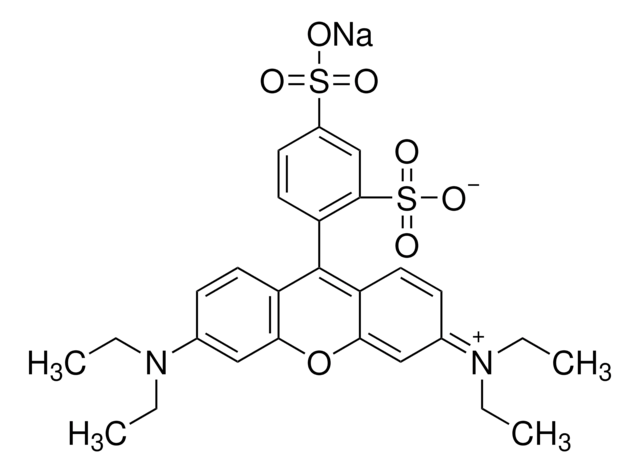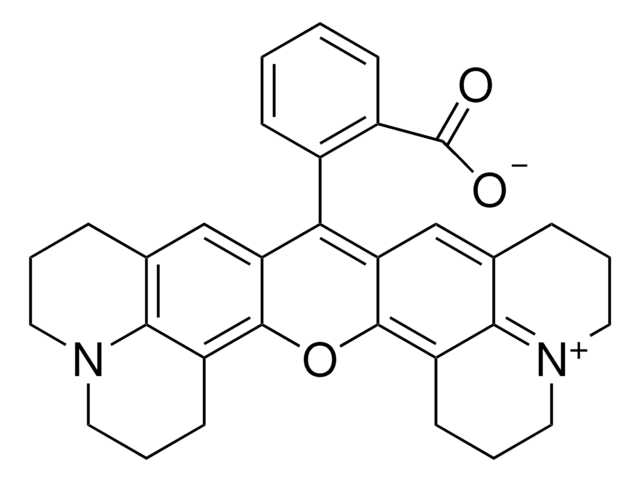S7635
Sulforhodamine 101
Dye content ~95 %, Powder
Sinonimo/i:
SR101; 2-(3-oxa-23-aza-9-azoniaheptacyclo[17.7.1.15,9.02,17.04,15.023,27.013,28]octacosa-1(27),2(17),4,9(28),13,15,18-heptaen-16-yl)-5-sulfobenzenesulfonate
About This Item
Prodotti consigliati
Nome del prodotto
Sulforhodamine 101, Dye content ~95 %
Stato
powder
Composizione
Dye content, ~95%
tecniche
microbe id | staining: suitable
Colore
black
dark green to brown
Solubilità
methanol: 1 mg/mL
ε (coefficiente d’estinzione)
≥105000 at 573-579 nm in ethanol
Fluorescenza
λex 586 nm; λem 605 nm in H2O
applicazioni
diagnostic assay manufacturing
hematology
histology
Temperatura di conservazione
room temp
Stringa SMILE
OS(=O)(=O)c1ccc(C2=C3C=C4CCC[N+]5=C4C(CCC5)=C3Oc6c7CCCN8CCCc(cc26)c78)c(c1)S([O-])(=O)=O
InChI
1S/C31H30N2O7S2/c34-41(35,36)20-9-10-21(26(17-20)42(37,38)39)27-24-15-18-5-1-11-32-13-3-7-22(28(18)32)30(24)40-31-23-8-4-14-33-12-2-6-19(29(23)33)16-25(27)31/h9-10,15-17H,1-8,11-14H2,(H-,34,35,36,37,38,39)
COIVODZMVVUETJ-UHFFFAOYSA-N
Cerchi prodotti simili? Visita Guida al confronto tra prodotti
Descrizione generale
Applicazioni
- to label astrocytes
- in quantitative polymerase chain reaction (PCR)
- to determine the degree of disintegration in tissue sample
Azioni biochim/fisiol
Codice della classe di stoccaggio
11 - Combustible Solids
Classe di pericolosità dell'acqua (WGK)
WGK 3
Punto d’infiammabilità (°F)
Not applicable
Punto d’infiammabilità (°C)
Not applicable
Dispositivi di protezione individuale
Eyeshields, Gloves, type N95 (US)
Scegli una delle versioni più recenti:
Possiedi già questo prodotto?
I documenti relativi ai prodotti acquistati recentemente sono disponibili nell’Archivio dei documenti.
Il team dei nostri ricercatori vanta grande esperienza in tutte le aree della ricerca quali Life Science, scienza dei materiali, sintesi chimica, cromatografia, discipline analitiche, ecc..
Contatta l'Assistenza Tecnica.




